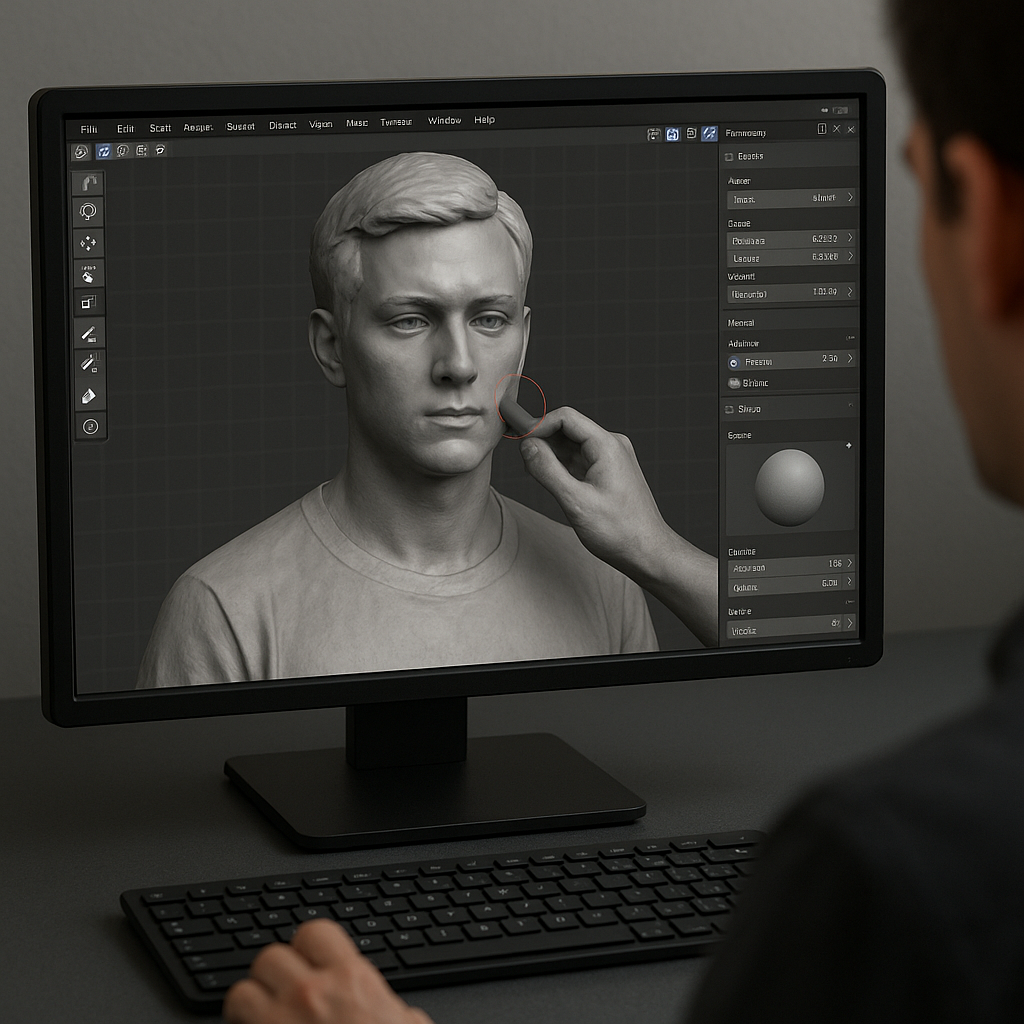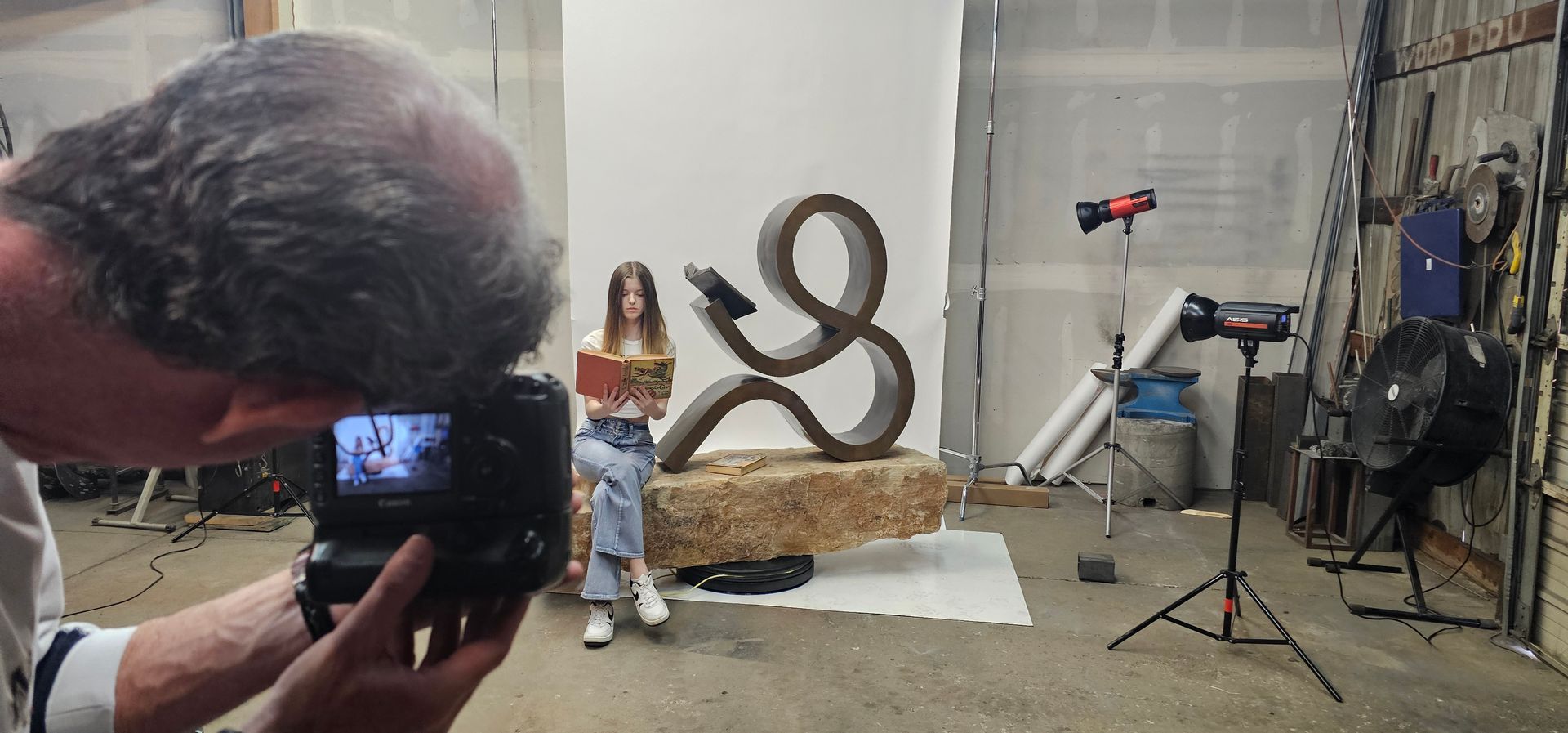The process of turning a person to bronze!
Laser or strobe scanning for 3D rendering is a process used to create an accurate digital 3D model of a person. It captures the surface geometry and, in some cases, texture information by projecting light (laser or strobe flashes) onto the subject and analyzing how it reflects back. We will send a 3d Capture team to you!

NEXT! 3D Printing or CNC Milling
- The prepared digital file is used to create a physical master model:
- For Small/Medium Sculptures: The model is 3D printed in plastic, resin, or wax.
- For Large Sculptures: Sections are CNC-milled from foam or clay, then detailed by hand.
The master model is assembled, if in sections, and refined manually.
2. Mold Making
- A flexible mold (usually silicone) is created around the master model.
- A rigid support shell (plaster or fiberglass "mother mold") holds the silicone in place.
The master model is removed, leaving a cavity that exactly replicates the surface.
3. Wax Casting (Lost Wax Process)
- The mold is filled with molten wax to create a hollow wax copy of the sculpture.
- Wax thickness depends on final bronze thickness (typically ~3/16” to 1/4").
- Wax details are touched up by artisans to match the original.
4. Investment and Burnout
- Wax copies are coated with ceramic slurry to form a ceramic shell.
- Once cured, the shell is heated in a kiln:
- The wax melts and drains out — hence, "lost wax" process.
The shell hardens, ready to receive molten bronze.
5. Bronze Pouring
- Bronze (usually silicon bronze for sculptures) is melted in a crucible to ~2,000°F.
- Molten bronze is poured into the ceramic shell molds.
After cooling, the ceramic shell is broken away, revealing raw bronze castings.
6. Metal Chasing & Assembly
- Bronze pieces are cleaned, weld seams hidden, and any surface imperfections removed.
- For large sculptures, sections are welded together seamlessly.
- Texture and details are restored where necessary using grinding and chasing tools.
7. Patination
- Chemical patinas are applied to the bronze surface for desired color and finish.
- The surface may be heated to accelerate and control the reaction.
- Wax or lacquer is applied for protection.
